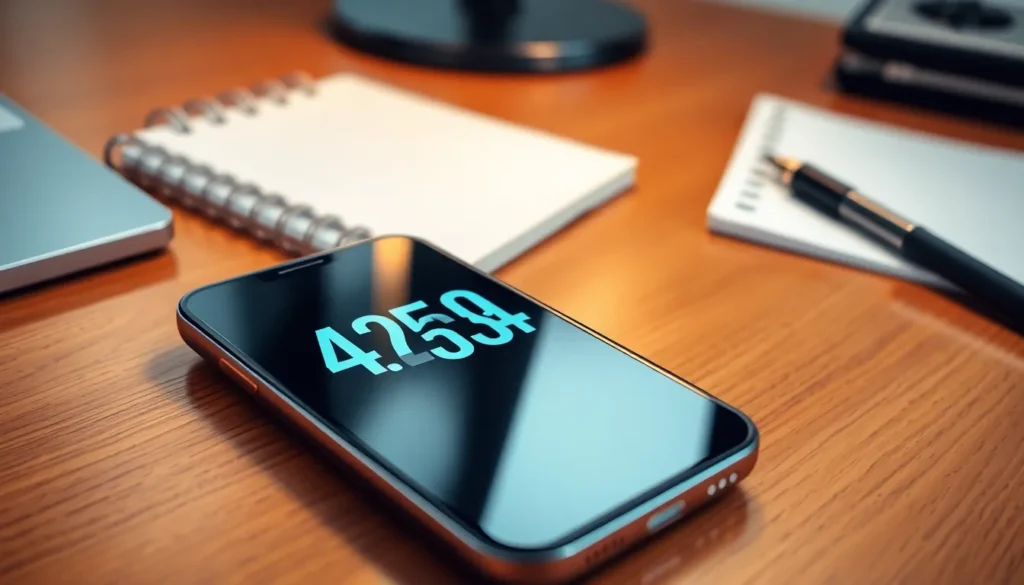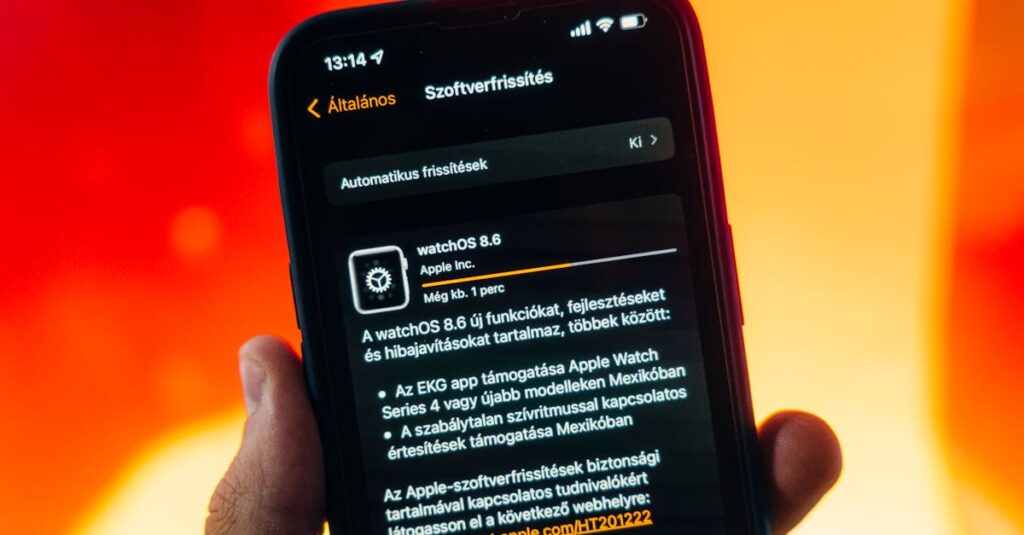Table of Contents
ToggleEver glanced at your iPhone and thought you’d accidentally entered a horror movie? That sudden red screen can be alarming, making users wonder if their beloved device has joined the ranks of haunted electronics. Fear not; it’s not a ghostly apparition but rather a common issue that can happen to anyone.
Understanding why that crimson hue appears is key to keeping your phone—and your sanity—intact. Whether it’s a software glitch or a hardware hiccup, knowing the cause can save you from unnecessary panic and those awkward moments at the Genius Bar. So, let’s dive into the mystery behind that red screen and restore peace to your digital life.
Overview of the Issue
A red screen on an iPhone can cause concern for users, often resembling a display malfunction. Numerous factors contribute to this phenomenon, including software bugs, hardware failures, and display errors. Recognizing the causes provides clarity and reassures users that not every issue signifies device failure.
Software glitches frequently lead to a red screen. These may arise from recent updates, app inconsistencies, or corrupted files. Restoring the software through updates or resets often resolves this problem.
Hardware issues present another common cause. A faulty connection, damaged screen components, or battery failures contribute to display irregularities. In such cases, a physical inspection by a professional ensures accurate diagnosis and repair.
Environmental factors can also play a role in screen discoloration. Overheating due to sun exposure or prolonged use may trigger temporary display issues. Keeping the device within safe temperature ranges prevents these occurrences.
Device users encounter a red screen for various reasons. Understanding these causes helps mitigate anxiety associated with unexpected changes. Knowledge empowers users to troubleshoot potential software or hardware problems confidently.
Addressing this issue promptly avoids further complications. When software solutions fail, seeking professional assistance remains crucial. Timely action ensures the preservation of device functionality and user peace of mind.
Common Causes of a Red Screen
A red screen on an iPhone may arise from various factors, ranging from hardware issues to software glitches. Understanding these reasons helps users manage concerns effectively.
Hardware Issues
Faulty connections between components can cause a red screen. Damaged hardware parts, such as the display or logic board, often lead to display anomalies. Corrosion from liquid exposure might disrupt the internal connections. When hardware problems occur, it’s best to seek professional assessment. Technicians can diagnose and fix these issues accurately. Use a certified service center to ensure proper repairs.
Software Glitches
Software glitches frequently trigger the appearance of a red screen. Recent updates or app conflicts can lead to these temporary issues. Corrupted files within the operating system may also cause disruptions. Performing a software update or factory reset usually resolves these glitches. Users can try restoring their devices through iTunes or Finder as a troubleshooting step. Keeping apps updated minimizes the likelihood of software-related problems occurring.
How to Troubleshoot the Red Screen
Troubleshooting a red screen on an iPhone involves a few straightforward steps. These methods focus on common fixes users can apply themselves.
Restarting Your iPhone
Restarting the device can resolve many temporary issues. To restart, press and hold the power button until the slider appears, then drag the slider to turn off the iPhone. Wait 30 seconds before powering it back on. This simple step often clears minor glitches, including the red screen. If the problem persists after restarting, further steps are necessary to diagnose the issue.
Updating iOS
Keeping the iPhone’s operating system updated can prevent software-related problems. Navigate to Settings, select General, then tap Software Update to check for available updates. Download and install any pending updates. Performing regular updates not only enhances performance but also fixes bugs that may cause the red screen. In cases where updates don’t resolve the issue, additional troubleshooting might be required.
Preventive Measures
Preventing a red screen on an iPhone involves proactive steps in software health and device protection.
Maintaining Software Health
Users maintain software health by regularly updating their iOS. Updates not only fix bugs but also enhance overall performance. Navigating to Settings, selecting General, and tapping Software Update ensures the device runs the latest version. Routine app updates also play a vital role; checks for updates in the App Store aid in preventing potential conflicts. Regularly backing up data provides an extra layer of security against unforeseen software issues. Users benefit from implementing a schedule for these updates, promoting consistent software health.
Protecting Your Device from Damage
Protecting the device from damage requires attention to both environmental conditions and physical care. Avoid exposing the iPhone to extreme temperatures, as overheating can trigger display issues. Investing in a quality case shields against drops and impacts, significantly reducing the risk of hardware malfunctions. Additionally, keeping devices away from liquids prevents moisture-related damage, which disrupts internal connections. Regular cleaning of ports and screens contributes to device longevity. Practicing these protective measures enhances the iPhone’s resilience against both accidental damage and environmental hazards.
Experiencing a red screen on an iPhone can be unsettling but understanding its causes can significantly reduce anxiety. By recognizing potential software glitches or hardware issues users can take appropriate action without unnecessary worry. Regular software updates and proper device care are essential to prevent these problems from occurring.
When faced with a red screen users should remain calm and follow troubleshooting steps to identify the issue. If problems persist seeking professional help is advisable to ensure the device remains functional. With proactive measures and a clear understanding of potential causes users can maintain their iPhones in optimal condition and enjoy a seamless experience.







